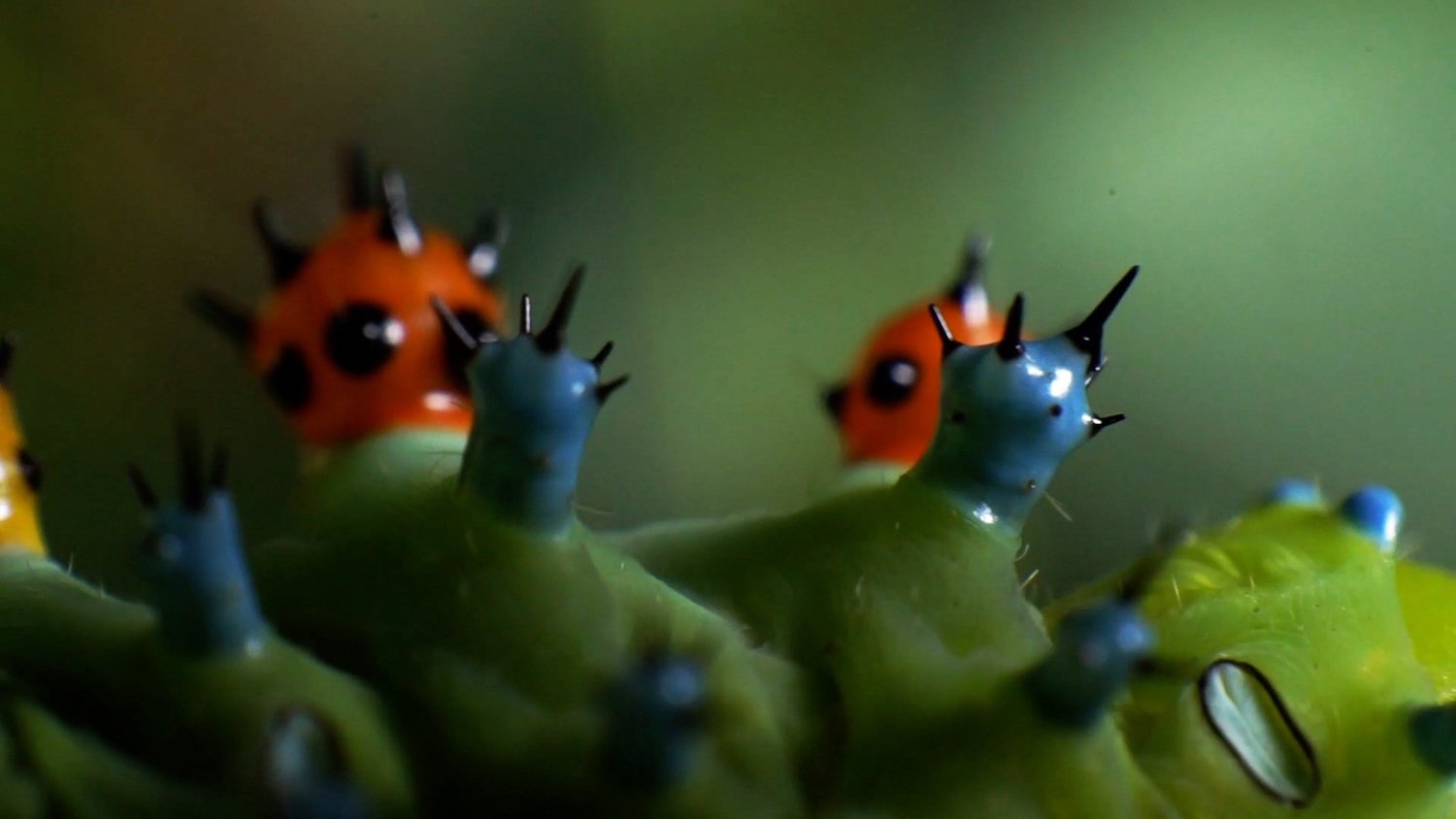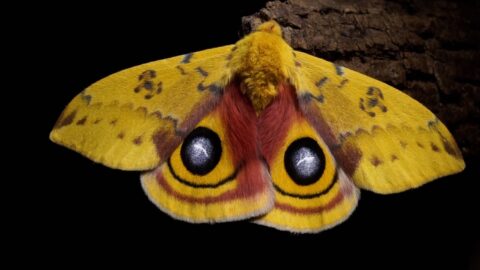For over forty years, Michael Gitlin’s avant-garde filmmaking has yielded moving image pieces encompassing fictive, archival, and animation practices, exploring the paradox of classifying and cataloguing the fragments of a collapsing social order. In his new film The Night Visitors (2023), he betrays, via onscreen text, his caustic conviction that “careful observation has turned an ill omen into a collection of facts, presenting in ironic miniature a system for knowing and shaping the world.”
At its best, Currents’ entry The Night Visitors melds these phenomenological and taxonomic contradictions into a rapturous fixation on ubiquitous Lepidoptera, the common moth.
As Gitlin explains, there are at least 160,000 recorded species of moths on the planet (though the actual number may be higher). However, most of the film’s focus remains localised to a group of New England entomologists who congregate around a blinding moth light where they can capture and observe various species. Soundbites from subjects like Sam Jaffe, the founder of the New Hampshire-based Caterpillar Lab, are communally interwoven; balancing methodological explanations for capturing and recording their findings to basic utterances of wonder, and even fright. Gitlin’s camera succinctly evokes this dynamic in lingering closeups of the furry, imposing bodies of these creatures at rest.
The resplendent colours of some species like the Rosy Maple Moth are striking to behold on a large canvas. Yet Gitlin’s hardly interested in aping the semiotics of a National Geographic special, openly refuting any anthropological or emotional identification with the insects. It’s partly their alien ambivalence which, Gitlin observes, may inspire “part of my retreat from people.” But any stolid severity is punctuated by playful passages, including a montage where the soundtrack’s rhythmic hand clapping abruptly stops on a cut to a specific moth. Gitlin doesn’t explicate his creative decision, instead guiding us toward a contemplative microcosm within the sheer enormity of their biodiversity.
Wonder and rumination give way to frank explorations of the historically destructive role moths have occupied in the cultural imagination. An extended section of the film revisits the impact Étienne Léopold Trouvelot’s failed silk harvesting industry had on the ecosystem in the late 19th Century when a cluster of Lymantia Dispar (now called the Spongy Moth) escaped his makeshift colony in Massachusetts to invade westward.

Attempts to counter the invasive species with the Compsilura Fly backfired spectacularly — resulting in the decimation of other native moth species. Gitlin contrasts this debacle with a series of invasions spanning thirty years in the succeeding century when hordes of moths inexplicably descended upon New York City. Gitlin’s framing of these cataclysmic events with the invention of the Edison light bulb proffers a historical reading that links environmental degradation with unfettered industrialisation.
This final point is contemporised by an entomologist determining how many moths are moving further north due to climate change. Gitlin doesn’t belabour the comparison, allowing his audience to draw their own conclusions regarding human myopia (he mentions in passing that Trouvelot’s enterprise, begun in 1861, sought to capitalise on the deficit of cotton imports from southern plantations).
Gitlin’s political outrage is articulated primarily by quiet dismay toward the human penchant for misinterpreting the natural world. The allegorical insertion of Edgar Allan Poe’s short story “The Sphinx” as a filmed recreation with a lone chair and superimposed moth dissipates the first-person narration’s hysterical horror with bluntly droll onscreen text. The moral of the story? “Never let geographical distribution get in the way of overwrought symbolism.” Still, Gitlin finds it a useful prism for teasing out, per the manifesto on his website, “some of the intricate conceptual and ideological systems out of which ways of knowing the world can be constituted.”
This epistemic conundrum is amplified by the persistent enigma of the perpetual attraction moths have toward light sources. Gitlin’s theory that moths are drawn to light out of “a kind of synesthesia” triggering a pheromonic sensuality, is a romantic, if underdeveloped, summation whose reassuring tone might be for his own benefit more than ours. Yet, even if some of the film’s universal observations are a little narrow in geographical scope, there’s a commendable desire here to shake off apathy — using the camera as a force to magnify our past and present.
Throughout The Night Visitors, footage is projected upon a screen within a grove of trees, this mise-en-abyme producing a metaphorical flame which beckons us closer. If this is indeed the twilight of capital-c Cinema, Gitlin’s feature asks the viewer to spend this time easing back into its world, granting himself and his audience a beguiling consideration of how an obsolete medium may yet help us regard the world anew.
Nick Kouhi is a programmer and critic based in Minneapolis, Minnesota

